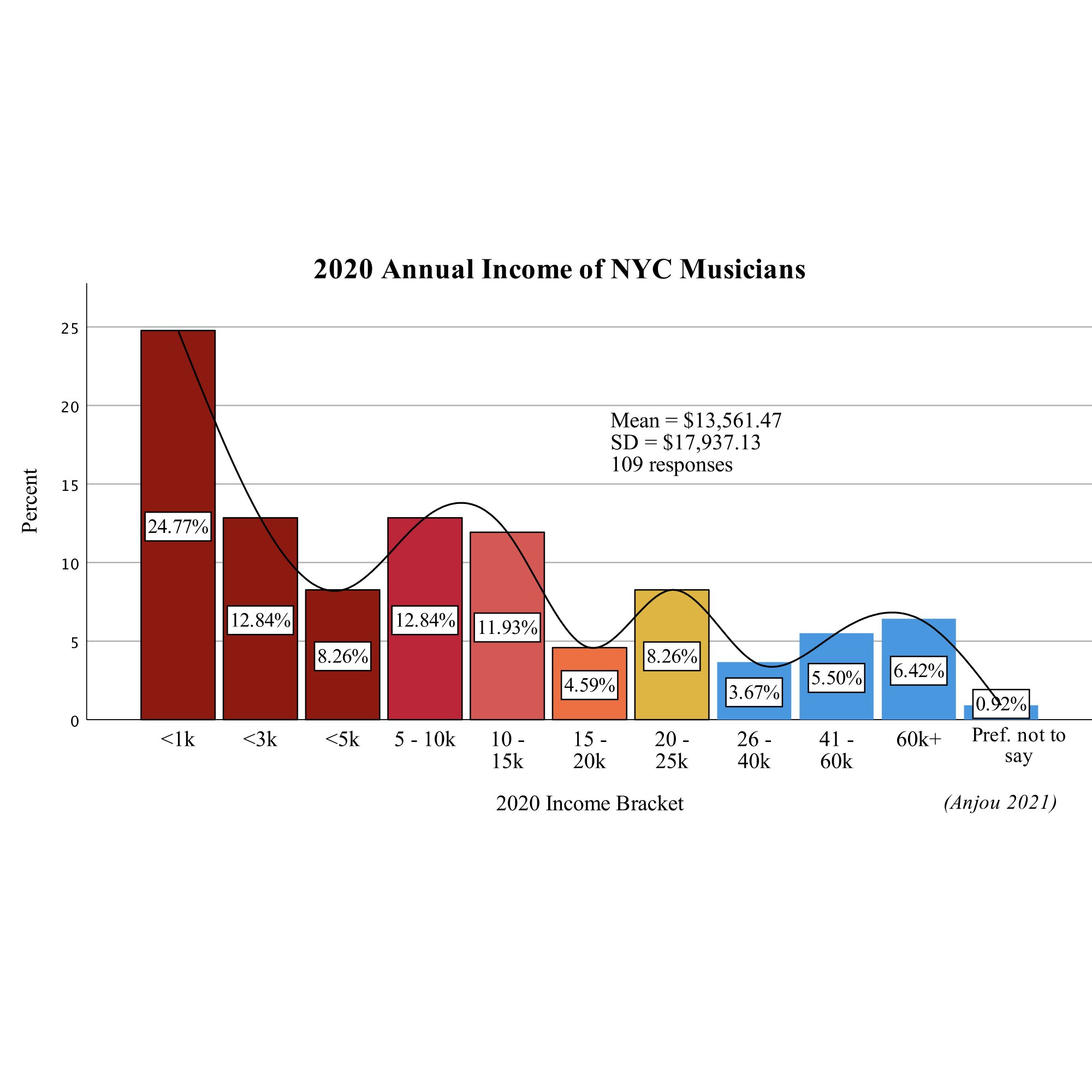Musicians and Unemployment Benefits in the Pandemic
Sixty percent of professional musicians reported receiving unemployment benefits during the pandemic, while 38% did not. Despite the industry-wide halt of live music in 2020, 35% of professional musicians did not apply for unemployment benefits in 2020. This suggests a population so disenfranchised, that many don’t see themselves as qualified to be supported by the system. Meanwhile, less than 4% of musicians were denied unemployment benefits in 2020.
Types of Gigs and Labor of NYC Musicians by Musical Genre and Instrument
A majority of NYC musicians (61%) reported that their primary sources of income came from freelance touring, recording, and teaching. Less than 5% derived most of their income from union contracts such as Broadway pit orchestra work, film/TV gigs, or union contract teaching positions (such as faculty at The New School). Additionally, 28% of musicians supplemented their income with side jobs or teaching in combination with full-time performing.
Key findings about labor roles revealed that 42% of musicians identified as side musicians, while 39% worked primarily as bandleaders. Instrumentally, 49% were rhythm section players, 26% played horns or strings, and 10% were vocalists. This is interesting as the adage amongst musicians typically assumes payment when performing other peoples’ music, but a requirement to pay others to perform one’s original music.
The majority of musicians (35%) primarily worked in jazz or improvisation, followed by 16.36% in free improv or avant-garde. Other genres included pop, world, traditional, punk, country, and Broadway.
While 86% of the musicians had released original music, only 30% reported having released more than ten combined albums and singles. Notably, less than 1% (0.91%) earned a livable income from royalties and residuals, highlighting a critical need for legislative reform to ensure fair wages from streaming platforms.
Mental Health Statistics of NYC Professional Musicians
Professional musicians in NYC report alarmingly high rates of anxiety and depression, with 79.19% experiencing high anxiety and 81.18% suffering from depression. These numbers are significantly higher than the 71.1% of musicians in the UK reporting high anxiety. Nearly 50% of musicians have suffered a panic attack, compared to 11% of the general US population. Furthermore, fewer than 20% of professional musicians have access to fully covered mental health care.
Overall, NYC musicians suffer from anxiety disorders at eight times the rate of the general population of New Yorkers before the pandemic and experience depression at ten times the rate.
For context, pre-pandemic mental health disorder rates in the general NYC population were approximately 8% (Thrive NYC, 2021). By December 2020, this had risen sharply, with 42.4% of adults reporting symptoms of anxiety or depression (Statista, 2021). While the Anxiety and Depression Association of America identifies anxiety as a reaction to stress, the COVID-19 pandemic heightened stress for 67% of U.S. adults, with 78% citing the crisis as a major source of stress (APA, 2020). Historically, stress levels in New York have been somewhat higher than the national average, according to a 2011 report by the American Psychological Association.
These findings underscore the disproportionate mental health challenges faced by professional musicians in NYC, particularly in times of crisis.


